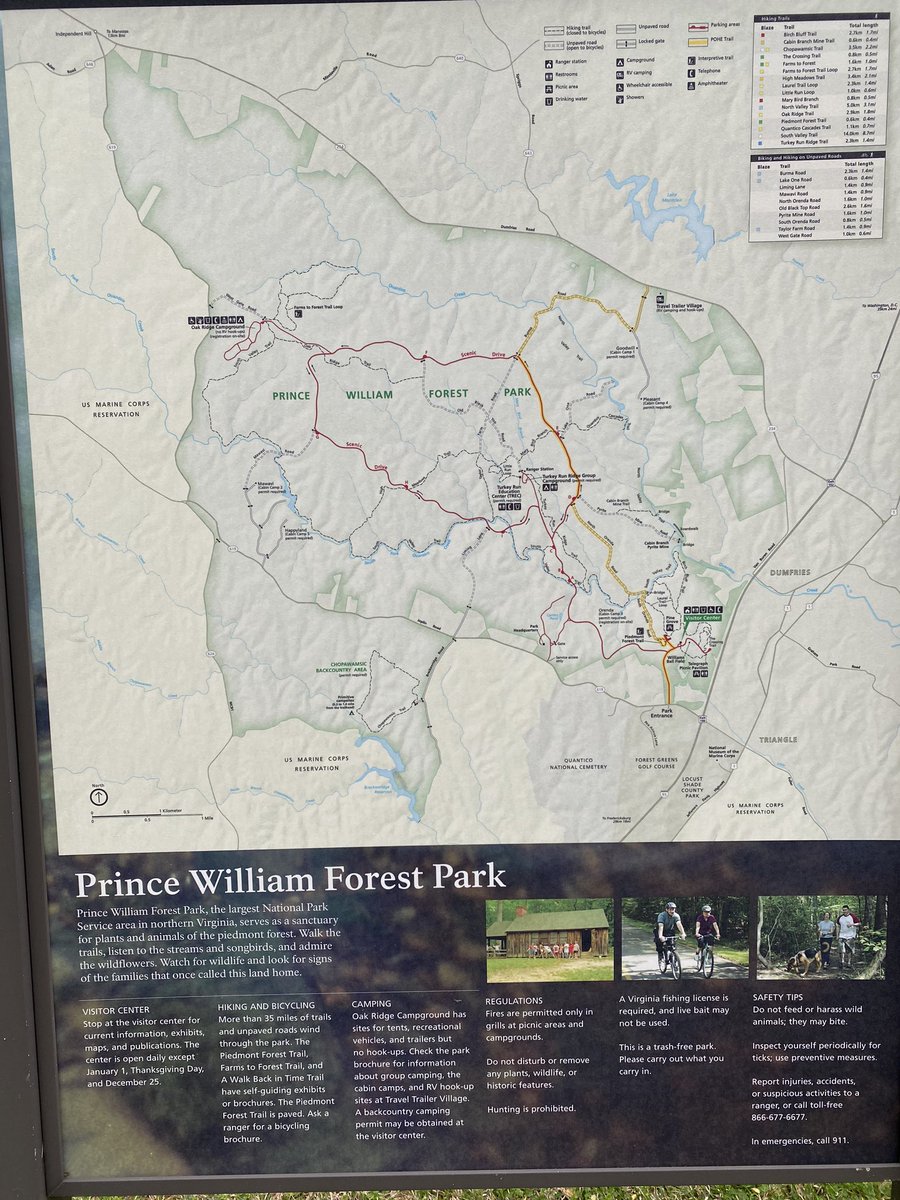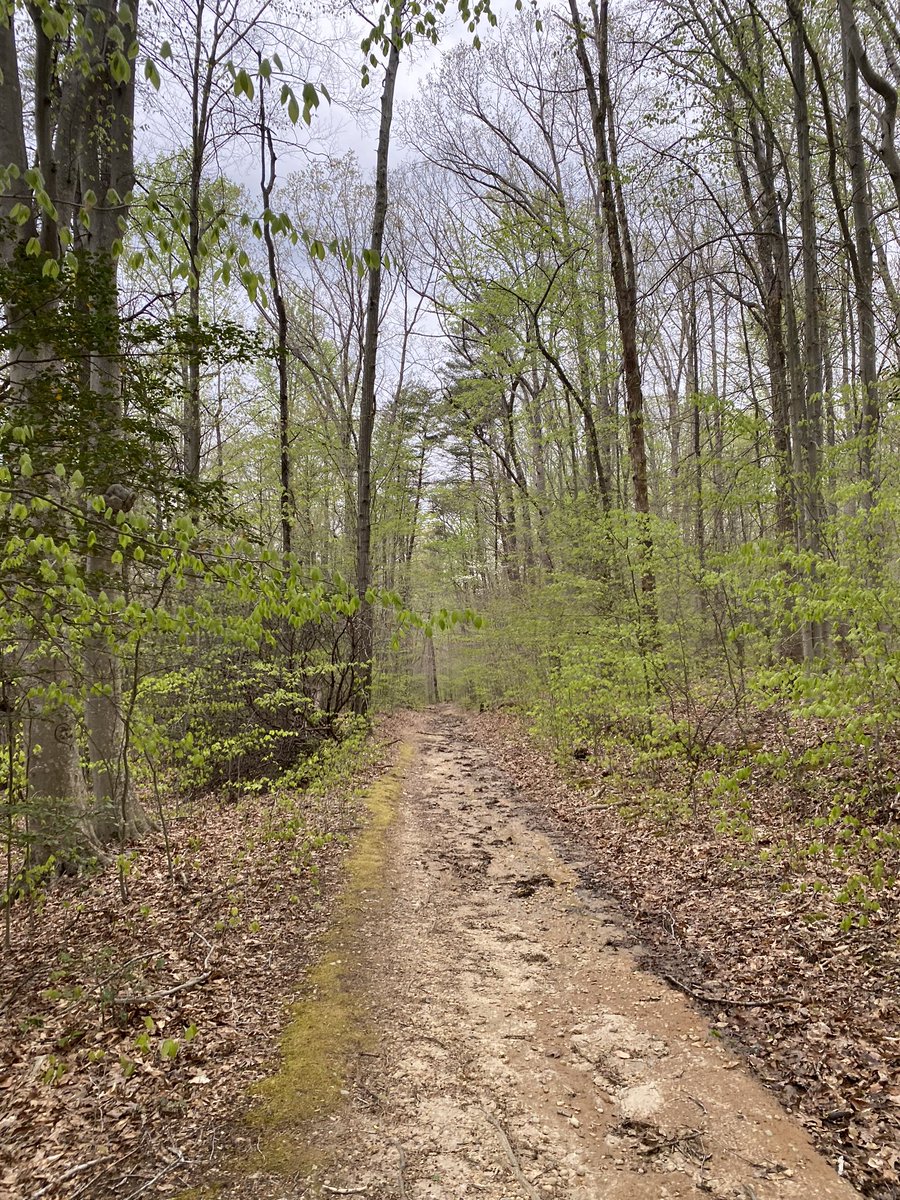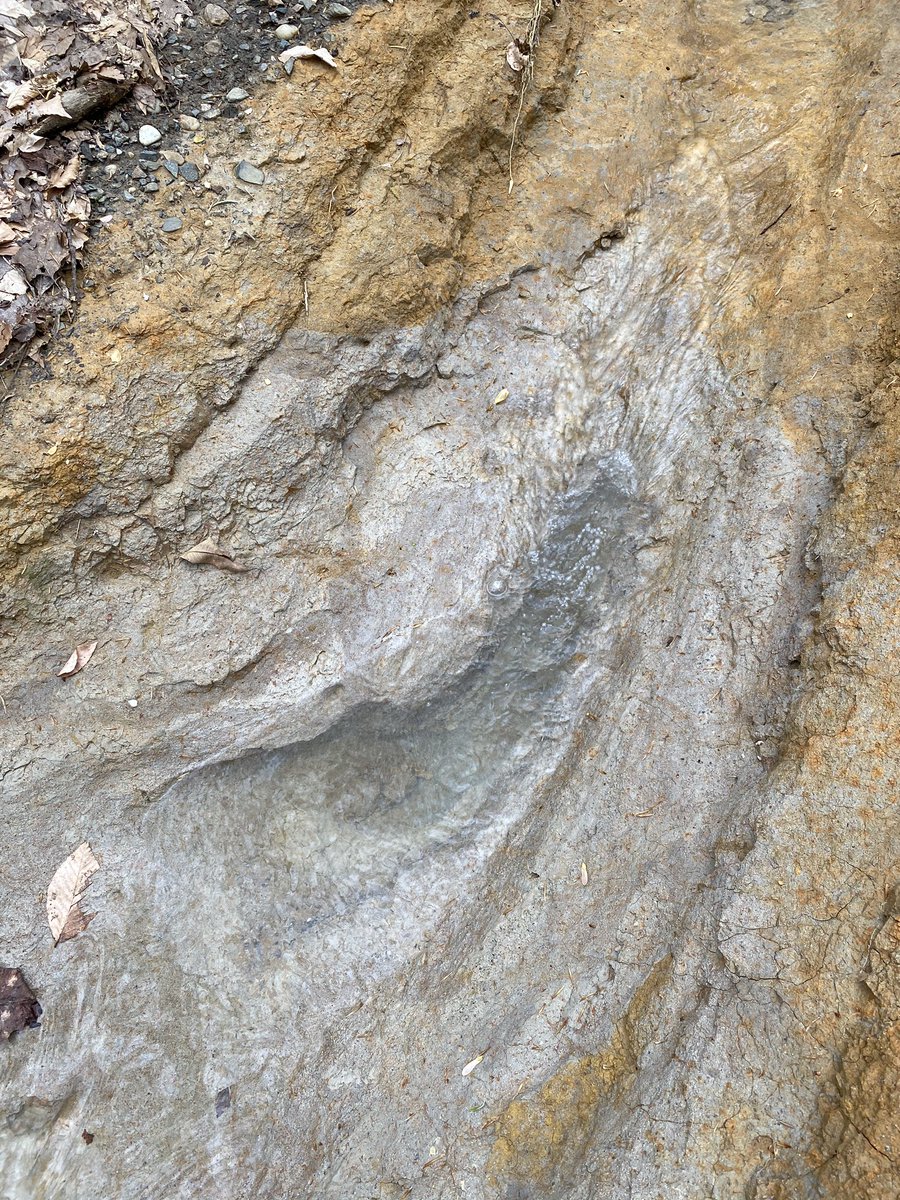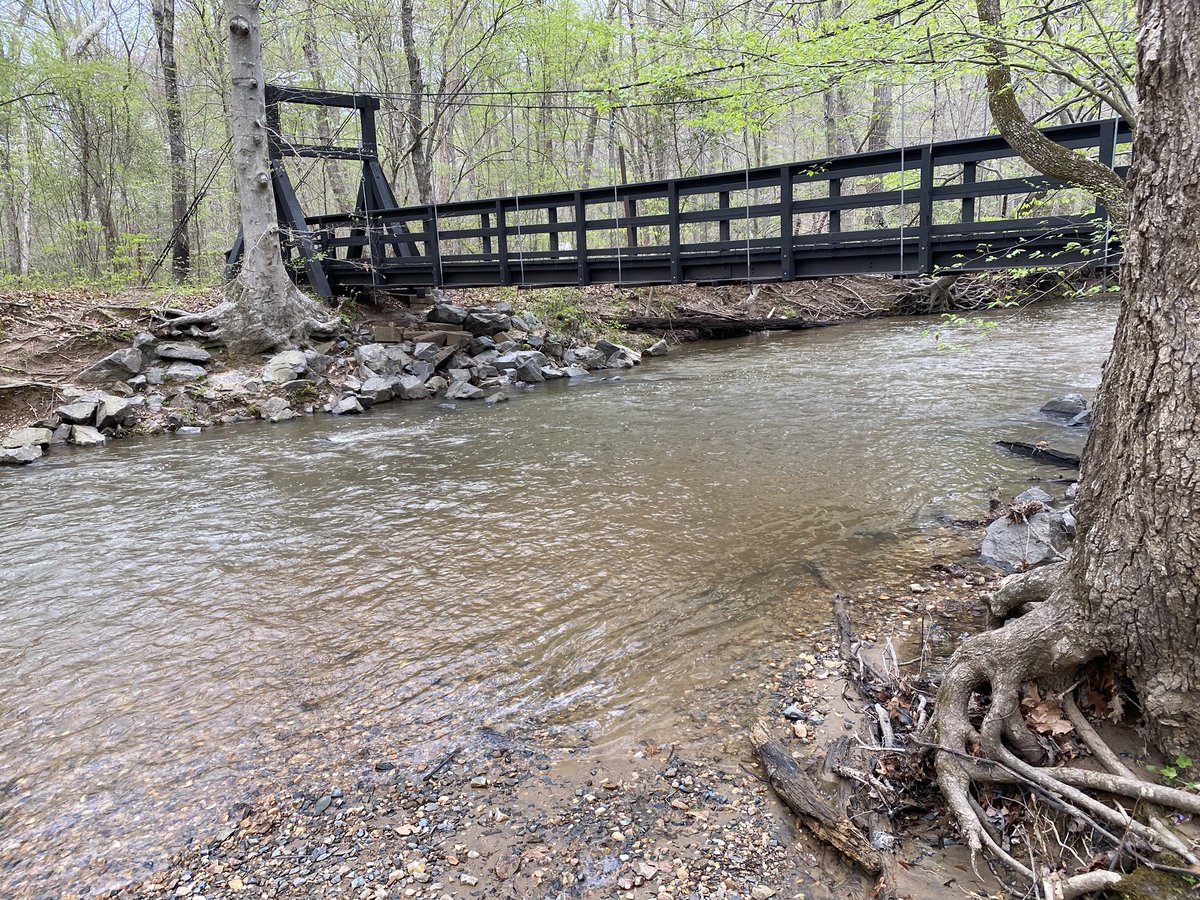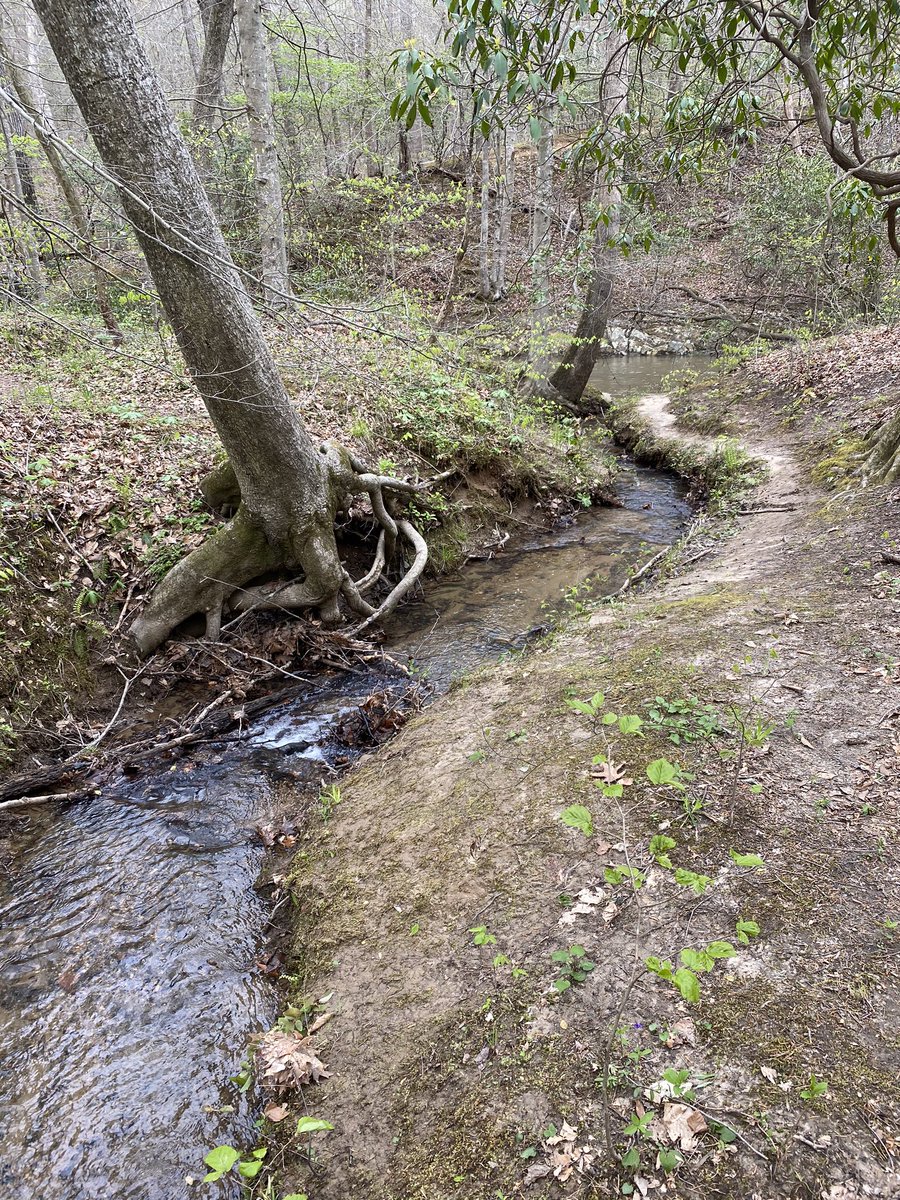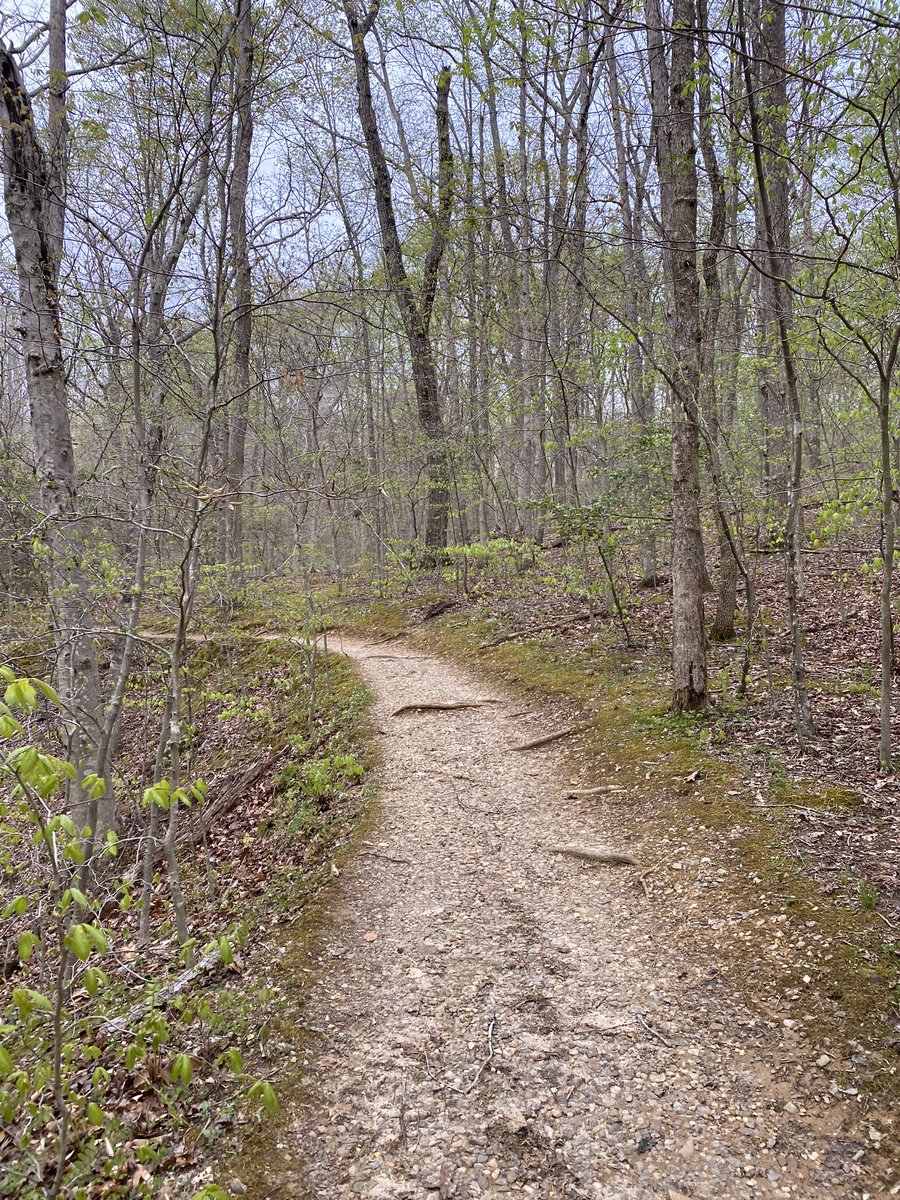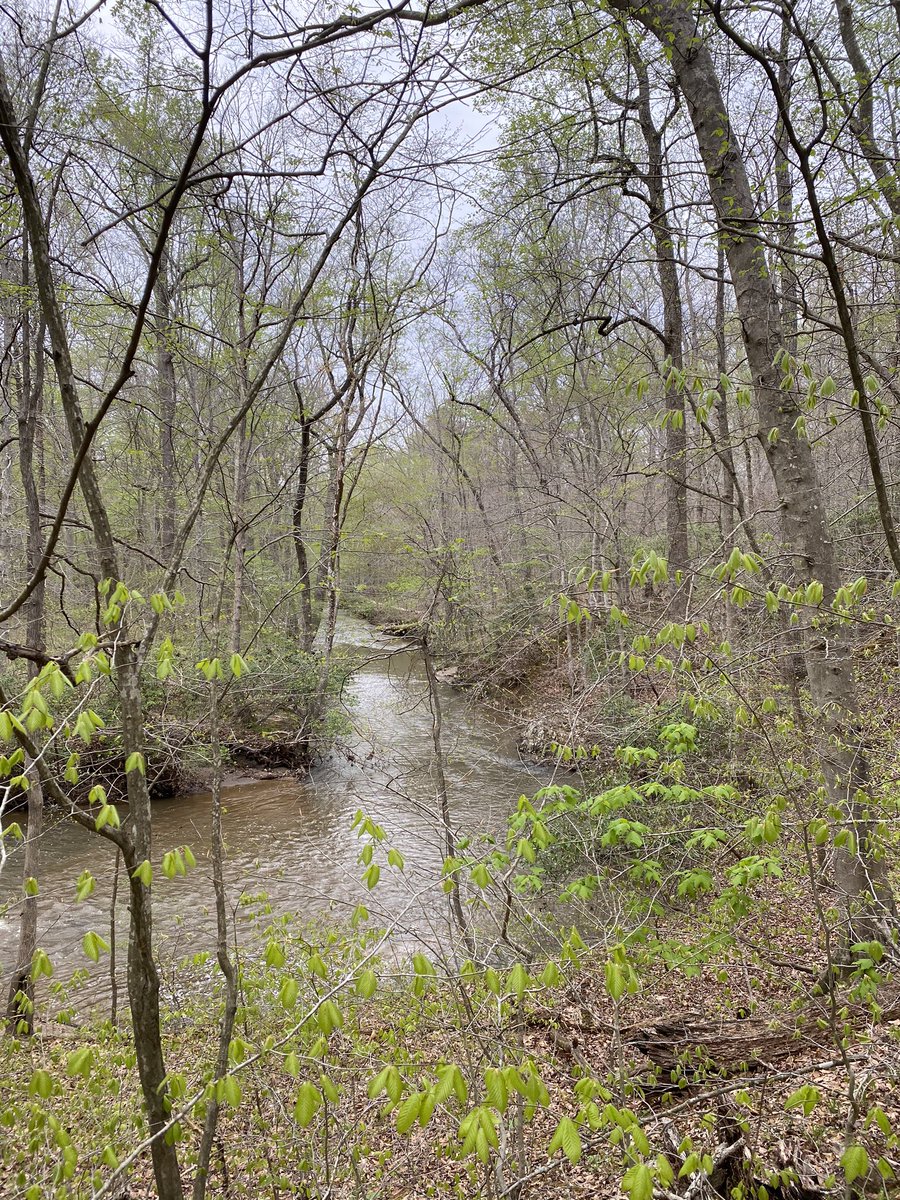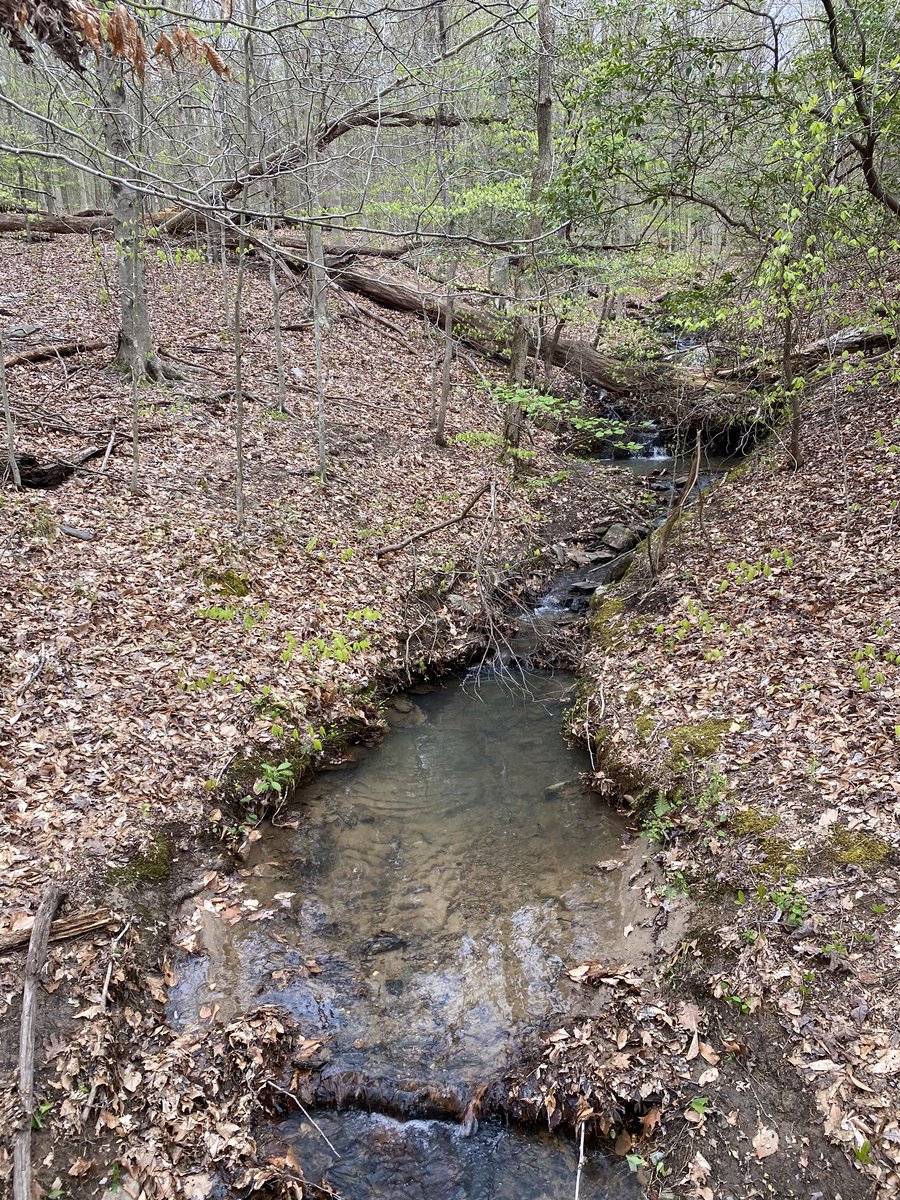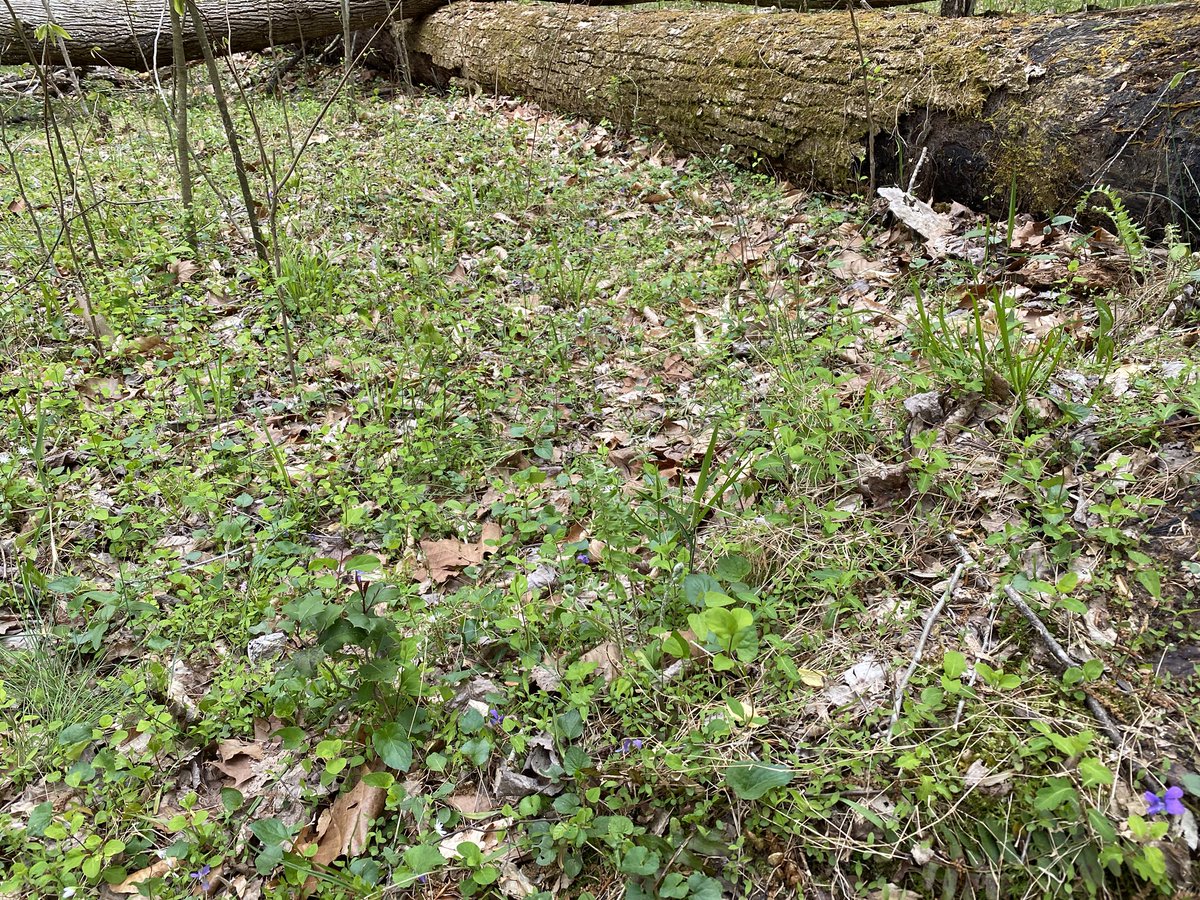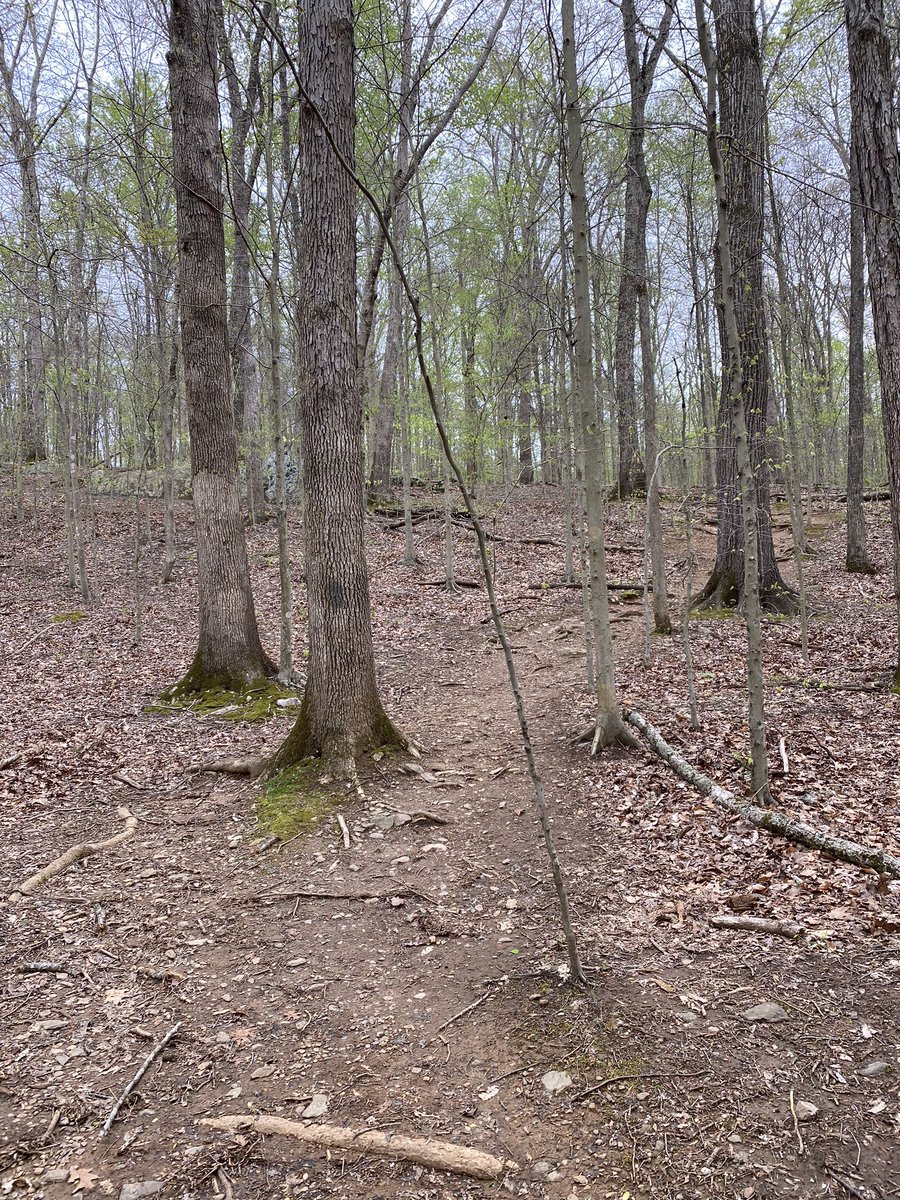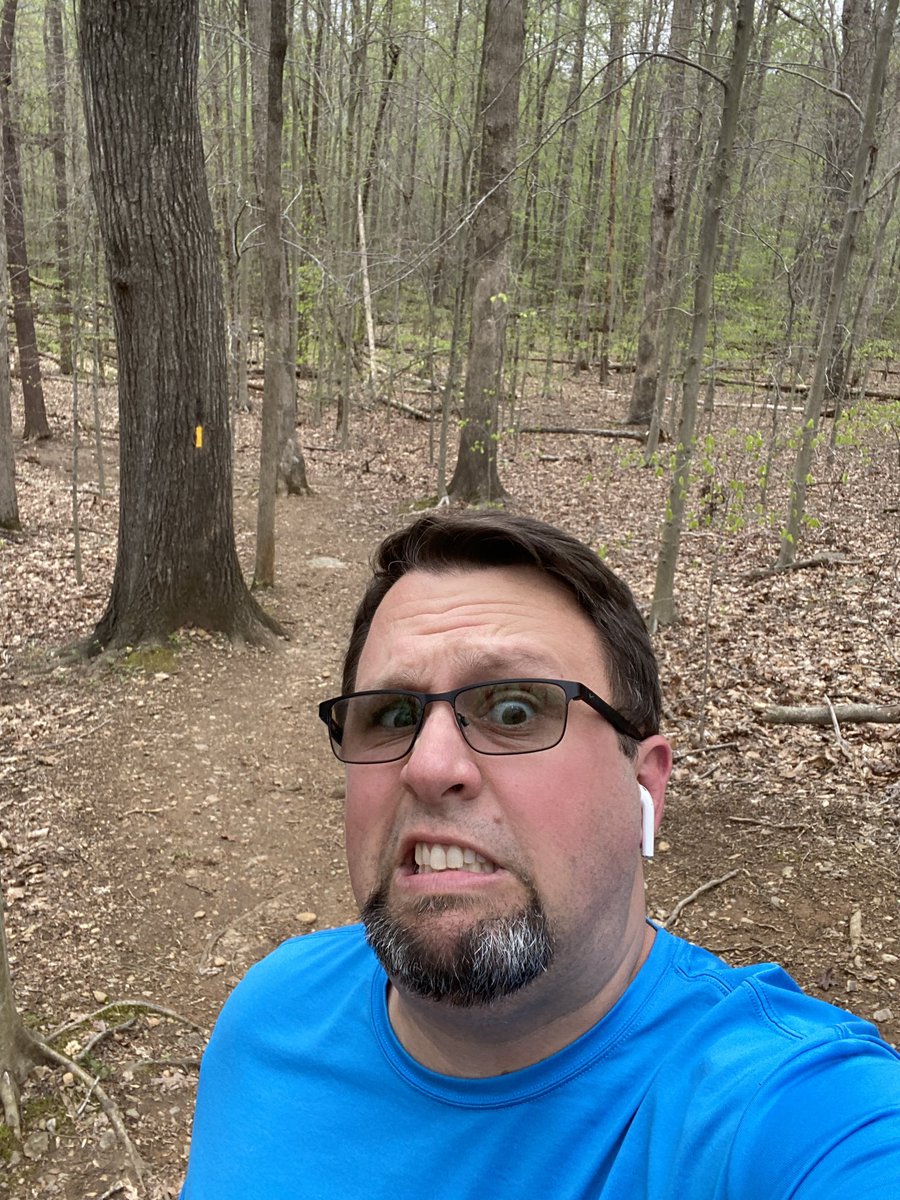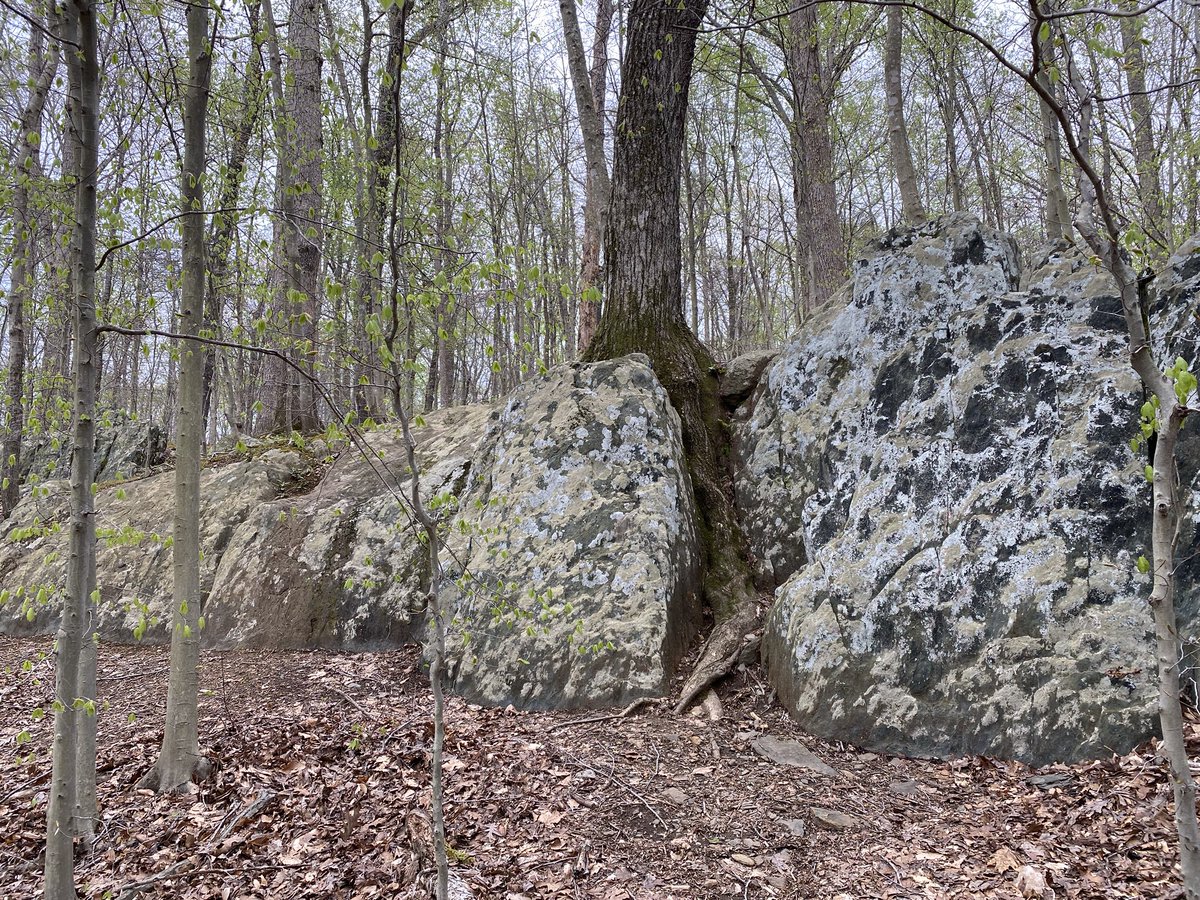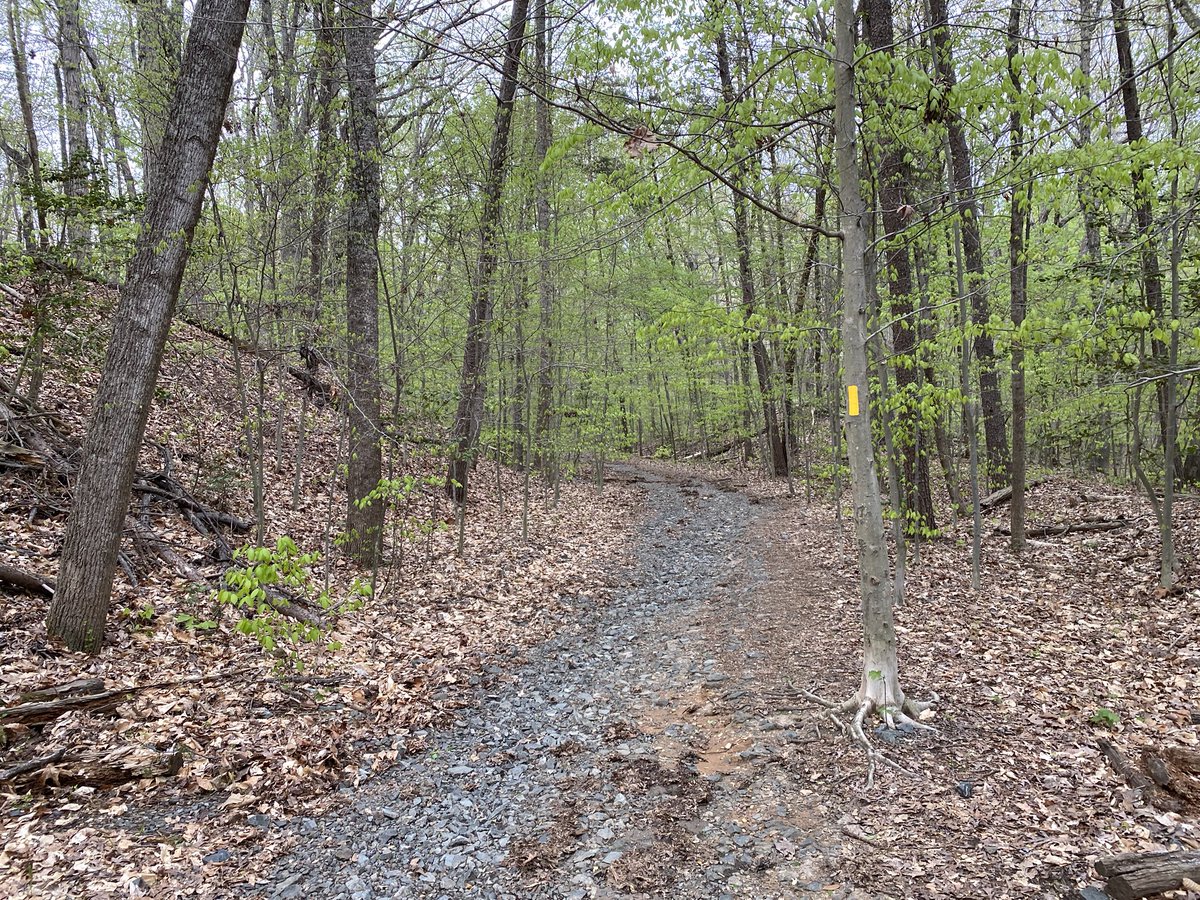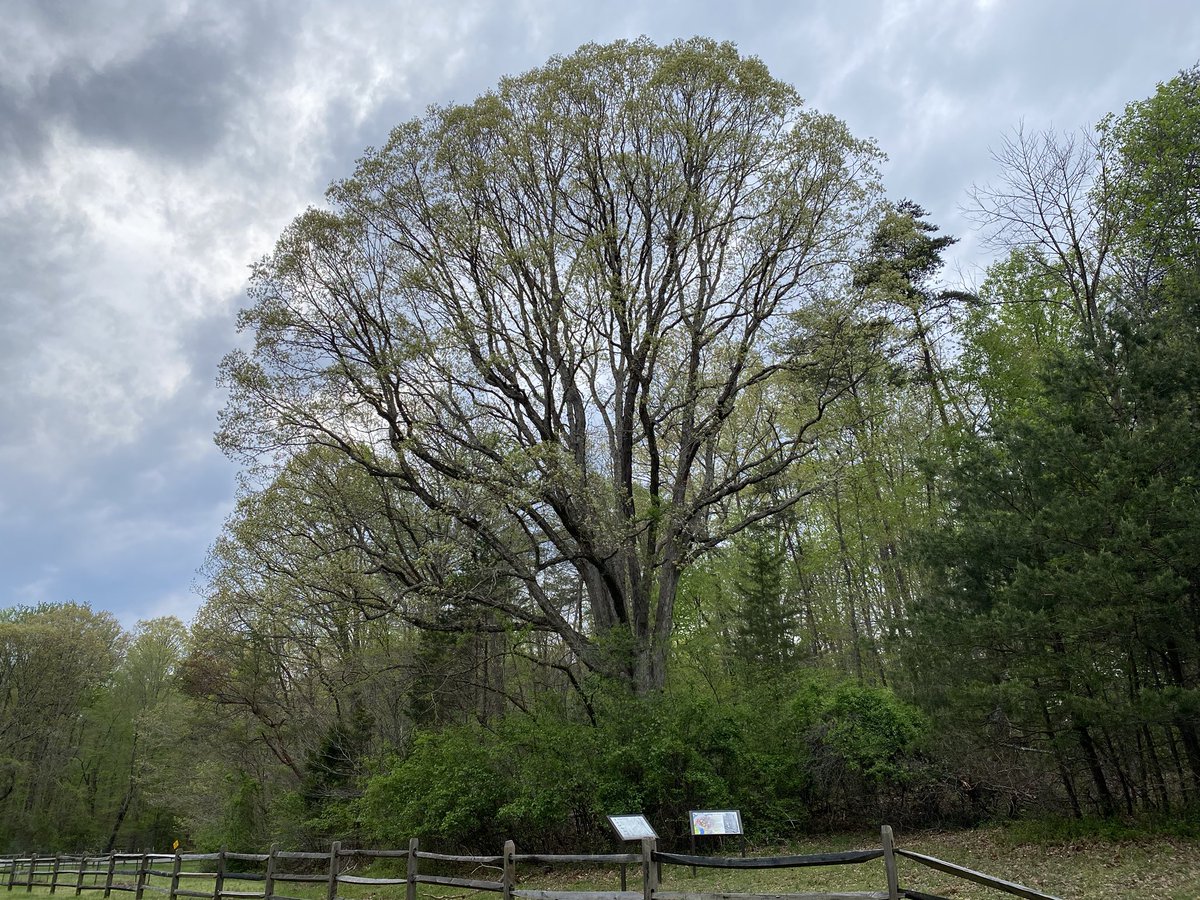Okie dokie! Let’s go for a “hike” together. Today, I’ve chosen Prince William Forest Park: it’s close to home, and part of the #NPS. Created in 1936 during the height of the Great Depression, it was part of a public works project championed by FDR.
Today, I chose the South Orenda Rd / Laurel Loop, as the park is closed (but still open to foot traffic!) and you have to walk your own sweet self in from the frontage road.
Dogwoods, the state flower (and tree, I think) of Virginia dot the berms along the side of the entrance road and are found throughout the park. I love them. So much.
As you head down South Orenda Rd (a relic of the farming community that once sat on this land), you become exposed to the changes in the forest’s biome. This is a succession forest - transitioning from fallow farmland to pine woods, and then to the famed eastern hardwoods.
In less than a hundred years, farmland, pastureland, small groves of remnant forest & riparian easements have become a vibrant wilderness. It’s rained a lot here recently, so ephemeral streams are *everywhere*.
This one hopped it’s bank and is causing fascinating erosion patterns in the clay substrate of the forestry road.
The forest road dead-ends at the Laurel Loop’s creekside portion: this is the South Fork of Quantico Creek, the watershed that is almost entirely contained within the park. High water levels, but very few suspended particulates: this is *good*! Humans cause sick waterways.
I traipsed off the main path onto a branching trail because I really, really love streams. This one is a real babbler. Lots of small, smooth stones and a fairly steep gradient keep it chattering away. So peaceful.
The path takes you up a series of fairly steep riverside bluffs. Notice the change in the soil? The path is now naturally sandy, as we’ve crossed from piedmont soils & bedrock onto the coastal transition plain (which used to be underwater!)
Lots of great views of a swollen Quantico Creek. You get 30-40 feet above the streamflow, and you’re surrounded by mountain laurels (but nearly at sea level!) and rhododendrons.
Recent storms have led to lots of downed trees and increased logjams from VERY heavy streamflow. The park service only clears hazards, as these are part of the ecosystem’s natural cycle. Those trees become important soil nutrients over a long period of time. Great critter homes!
As we continue along the very moist bottomlands along the stream, carpets of spring ephemerals pop up all over in the rich alluvial soil. The hillsides have more impoverished, rocky soils, and ground cover is less widespread. The heavy leaf litter also suppresses growth.
As we head up a steep hillside, you can see the tree species and soil type shifting rapidly back to that piedmont type. This park seriously straddles SO MANY kinds of forest biomes and soil types! Huge biodiversity for the eastern seaboard.
But.. there’s gorgeous granite outcrops, covered in beautiful lichen (a symbiotic relationship between fungi and algae or Cyanobacteria) - they’re responsible for forming lots and lots of the world’s soils by slowly breaking down rock and adding biomass.
As we get further into a mature stand of trees, we see the canopy reaching a majestic 80-110 feet above ground level. Never forget to stop and look up: it’s mesmerizing.
We’re just over halfway through our hike. I’m a fat kid, so this is a good burn for me. Do you enjoy tracking your workouts? It can be a powerful motivator to keep going!
I like hiking as a workout because you are basically stuck with having to keep going: you can’t just hop off a machine and go home. FEEL THE BURN. STARE AT BEAUTIFUL SCENERY AS YOU HUFF & PUFF UP THAT HILL.
All good things come to an end, sadly. Now begins the slog back to the car. These empty parking lots still spook me out - this place is usually full of outdoor enthusiasts.
I mentioned that the park was largely converted over from small communities and farmland, right? There’s a few old-growth trees, like this truly majestic oak near the visitor center. This grand tree is several hundred years old and about 120 feet tall.
Last li’l peek at the park: a vernal pool! Usually only around in the early spring and after especially heavy rains, these are important breeding grounds for a rich number of amphibians and aquatic insects. Spring peepers were goin’ full tilt despite the low air temps.
Anyhow, I hope you enjoyed this experience. I’ll do another one soon if everyone liked it!

 Read on Twitter
Read on Twitter